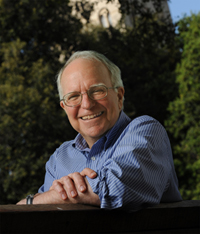The Brookings Institution is committed to quality, independence, and impact.
We are supported by a diverse array of funders. In line with our values and policies, each Brookings publication represents the sole views of its author(s).

Research
BPEA
1970, No. 3
THE OUTSTANDING PROBLEM of contemporary macroeconomic policy in the United States is the unfavorable trade-off that exists between unemployment and inflation. Many economists have studied this phenomenon in detail, and there is practically universal agreement that low unemployment rates imply high rates of wage and price inflation, or, equivalently, wage and price stability requires a high rate of unemployment. In short, the Phillips curve has an unfavorable location in the unemploymentinflation diagram, passing far above and to the right of the point of low unemployment and wage stability. There are many interesting ways to examine this problem; my purpose in this paper is to study it only in the way suggested by the title. That is, I will look into the nature of the unemployment that remains when labor markets are reasonably tight and the economy seems to be at full employment. Most of my data are observations on individuals, collected in a variety of surveys, rather than macroeconomic aggregates.